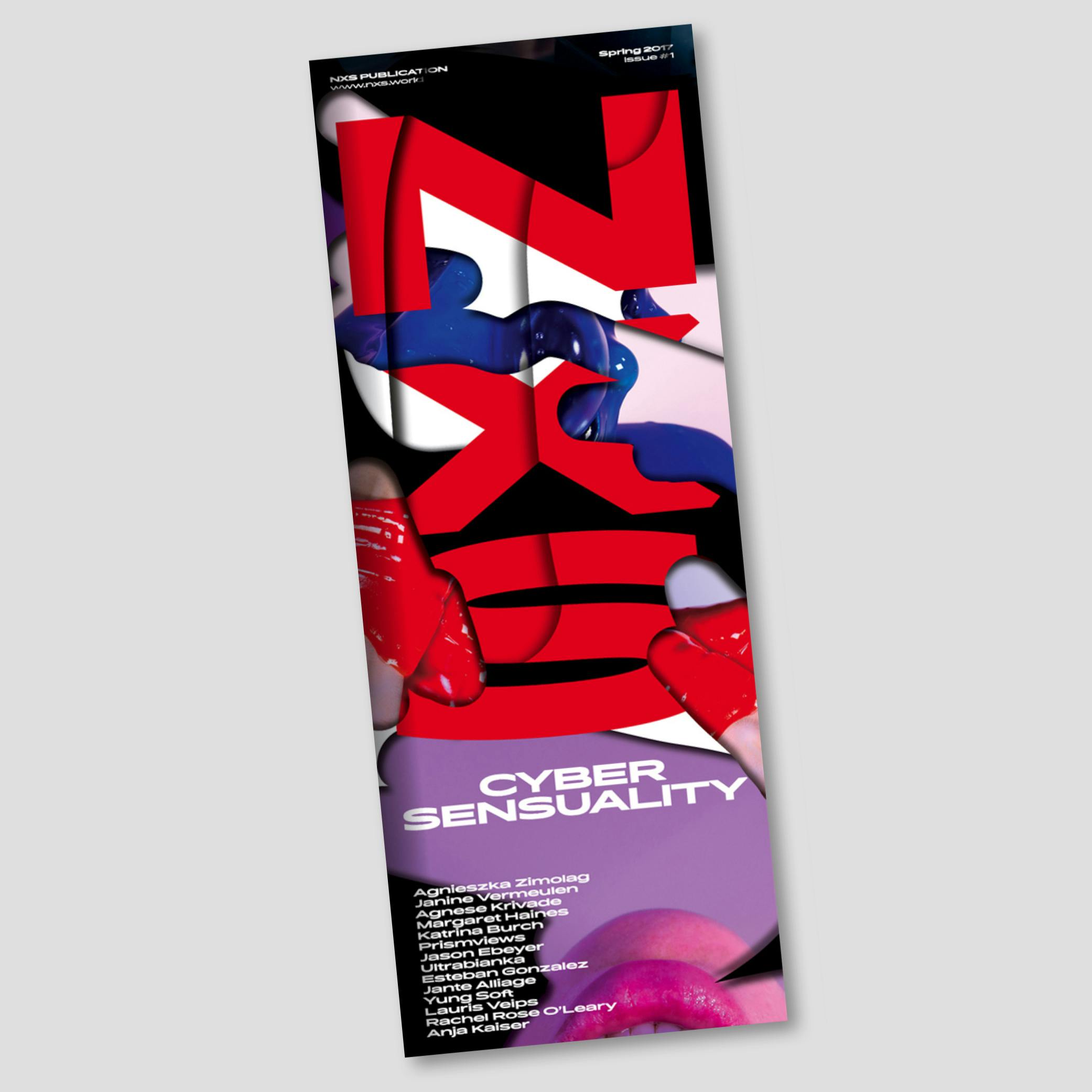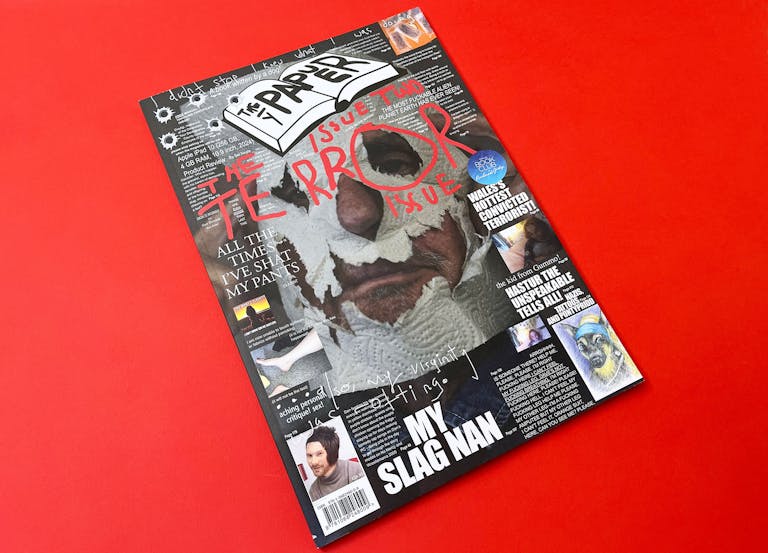An end to the oddness
An independent magazine that tells stories about our emotional connection with technology, NXS digs into the weird, glitchy places where emerging tech mixes with everyday life, painting an alternative picture of the present and future. The latest issue is themed ‘Phygital Fashioning’, focusing on ways in which the fashion industry is blurring the lines between physical and digital realities, with heavy emphasis on the metaverse, NFTs and the growing significance of digital avatars.
These technologies are more in the public consciousness than ever before, but the NXS editors have announced that this issue is going to be their last for the foreseeable future. So as this ambitious and innovative magazine draws to a close, I caught up with editors Karolien Buurman and Monika Gruzite to hear their thinking behind the latest issue, and why they’ve decided to stop publishing.
STACK: I loved your new issue on Phygital Fashioning – to start with, could you explain what that is, and why you wanted to cover it now?
KB: We always wanted to do an issue about fashion, so we were waiting for the right moment to do that. And we were also intrigued by this leap into the digital realm that we made during the pandemic – we were already meeting people and gaming and using filters and all this stuff online, but it grew exponentially. The fashion industry has also had to adapt in the pandemic, because it’s based so much around physical products and physical appearance, and in just a couple of years it’s moved a lot of that to digital.
We took the title of Phygital Fashioning, as in ‘fashioning’ like shaping, or choosing a way to present yourself. And the ‘phygital’ part focuses on those experiences that were mostly happening offline, but which are now happening online. We were interested to ask whether these things are trying to replace physical experiences, or whether they are doing something new, and does any of this point to the future we’re heading towards?
MG: One of the contributions challenges the word ‘phygital’, because they say fashion is always something that’s not only physical – it always has storytelling, and this imagined side of it. But at the same time I think we’re trying to describe the way that in the pandemic we were forced in so many aspects of our lives to be online – most of our human interactions went online, and because it was so forced and so sudden and so full scale, there were also kind of glitches and errors in how that all happened.
KB: So maybe it also represents this clumsiness you have at the beginning where you don’t really know how to do something yet, and we’re also addressing that feeling – how we’re stumbling into the metaverse and we’re trying to figure out what this thing is… What does it mean?





STACK: You talk about glitches and errors and stumbling, and I think that characterises NXS. The images often have that glitchy quality to them, or the typography will be difficult to read – it feels like NXS is somehow essentially glitchy.
MG: Yeah I think so, because we’re interested in those moments where things aren’t going as smoothly as they could. They’re the parts that are interesting to look into and figure out what’s happening there. That’s what we try to convey in the design; something is off, but in a good way.
KB: This is also to do with a certain type of honesty – technology is not perfect in the way that it serves us. We are also not perfect in understanding the technology that is supposed to serve us, so we’re kind of acknowledging that: The confusion, the fears, or desires, or the unintended relationships we develop with technology. It’s highlighting the emotional connection we have with technology.
STACK: I like the way that NXS problematises these stories too. It doesn’t tell simple, neat stories, and instead it looks for the more difficult and interesting versions of the future.
KB: This issue was really complex for us to make – more so than the other ones. There have been two years between issues five and six, and there were so many things happening that we decided to use fashion as a lens to look at all these other subjects. So we brought in NFTs and the blockchain, and new forms of consumerism, asking who profits from that?
We have all these questions but we can’t answer them yet. There’s Zuckerberg explaining to us how it works, but we can’t properly reflect on it because we’re not even a couple of years in. So we’re really at the frontier and looking at what’s there. We wanted to address the questions that are arising by bringing in these people from various backgrounds speaking about it from their own perspectives, and maybe you’re left with even more questions after reading, but hopefully more critical questions, and realising that there is a lot to be aware of. We also like to see this publication as like a timestamp, so maybe in a couple of years people will read it and see that this is how we felt at this moment in time, because all these developments are moving so fast.
STACK: That was baked in at the start wasn’t it? You wanted to use print to look at digital because it gives a slower approach with more time for reflection. And I think that idea of a timestamp totally works – I was looking back at issue one and I was surprised to see how much of that is dedicated to text messaging, which now seems like such a sweet and nostalgic technology to focus on.
KB: And that was only six years ago!
STACK: This issue is the one that took you the longest amount of time, and it’s also the one that you’ve decided should be the last. Are those two things related?
MG: In some way it is related, because during the pandemic it was difficult. We rely on book fairs where we can get out and meet readers, and also lots of bookshops were closed, so it was difficult to get the magazine out there. It’s incredibly hard to make self-publishing sustainable, and when these crisis moments come along it becomes even harder.
KB: It’s also to do with the amount of time we had available – it took two years because we really had to focus on other kinds of activities that could put bread on the table, and it was difficult to keep investing time in a consistent manner and to maintain NXS where it was.
We also just felt that we’d squeezed out everything we wanted to do with NXS – we reached a lot of the goals we wanted to reach. We’d said at the start that we wanted to publish six issues and the sixth one just came out… we’re still in love with NXS and with the project, so it’s not an easy choice, but it’s just really good to step back for a bit and reflect on how we want to move on from this. Maybe we will all work together again as a collective, but for now we’re calling it a day.






